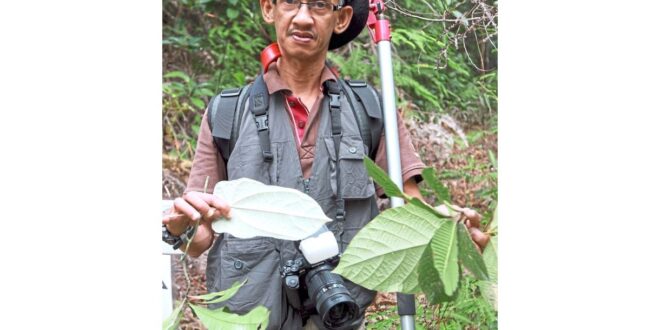KLANG: The recent spate of uprooted trees has left many guessing what could have been the root cause for the mighty giants to fall.
The mishap not only created traffic chaos but also tragically left one dead and another seriously injured.
Experts say many factors could have contributed to the tragic incident.
Arborist and botanist Assoc Prof Dr Rahmad Zakaria (pic) of Universiti Sains Malaysia (USM) pointed out that aside from extreme weather changes, poor town planning and improper tree maintenance could lead to uprooting.
“The hot spell will dry and loosen the soil, causing it to wash away easily during a heavy downpour and expose the roots which will then rot and weaken,’” he explained.
Rahmad said improper town planning – such as constructing walkways and cemented structures around trees – would restrict root growth areas, resulting in weak and insufficient root systems unable to withstand strong winds.
He also said tall buildings in the cities could alter wind directions, potentially causing trees with weak root systems to fall after enduring continuous exposure to strong winds.
Moreover, unsuitable tree species selection and the failure to observe standard arboriculture maintenance techniques can contribute to trees weakening over time.
Rahmad emphasised the importance of engaging qualified arborists to conduct tree health analyses in busy urban areas to prevent further mishaps.
Geotechnical engineering and hydrogeology expert Assoc Prof Dr Mohd Ashraf Mohamad Ismail, also from USM, identified pollution and soil subsurface conditions as factors that exacerbate tree damage.
He underscored the importance of proper irrigation and soil management, highlighting that compacted soils and inadequate watering could stress trees and weaken their structural integrity.
“Furthermore, the consistent employment of certified arborists for pruning and health assessments could have prevented unnoticed issues from escalating to critical levels,’’ he said, concurring with Rahmad.
Mohd Ashraf stressed the importance of urban infrastructure development plans to protect existing trees through root barriers and appropriate construction practices to minimise root system damage.
He called for research investment to enhance understanding of urban tree health and develop innovative solutions for tree care and management, including the use of technology for monitoring tree health and growth conditions.
He also emphasised the need to promote education and training in arboriculture programmes due to the acute shortage of arborists in the country.
Assoc Prof Dr Mohd Rosli Mohd Hasan, whose area of expertise includes highway engineering, asphalt technology, as well as sustainable pavement and construction techniques, said there needs to be a clear understanding of tree anatomy to prevent untoward incidents.
“A big tree requires roots for various reasons. It is crucial to provide stability, other than nutrient intake and storage, water absorption, and overall health and growth.
“Trees have two root systems – underground and aerial roots – that can grow two to four times farther than their canopies to anchor the trees down,” he said.
Mohd Rosli, who is with USM’s engineering faculty, added that due to the construction of roads, building and pavements, the aerial root is often cut, leading to poor stability and severe damage to the tree.
“Sometimes when this is done, soil is heaped up at the base of the trees with the belief that it will stabilise the trees.
“But this will only increase the moisture and make it damp resulting in the roots rotting and further decreasing the tree’s stability,’’ he said, adding that selected tree species should be planted at appropriate areas and at a safe distance from buildings and roads.
Trees are generally planted in the city for landscaping purposes and to prevent the urban heat island effect.
Heat is absorbed and retained by buildings and pavements during the day, then released at night through heat radiation, he said.
He said a potential alternative to tree planting is to implement a solar heat-reflective pavement or other types of cool pavements like how it was done in Japan and a few other countries.
The heat-reflective pavements remain cooler under the sun as opposed to traditional pavements.
“Another method to consider is the use of algae in water features around towns and buildings, which have potential applications in mitigating carbon emissions and addressing urban heat island effects, instead of planting trees.
“Algae can absorb carbon 400 times better than trees,’’ said Mohd Rosli, adding that this approach was successfully implemented at a building in Germany.
The Bio Intelligent Quotient House is among the first buildings that utilised algae to solve both energy and environmental problems.
“Effective future development requires careful planning and thoughtful consideration of diverse environmental, structural and community concerns.
“Adopting sustainable practices and mitigating measures may achieve a harmonious balance between development requirements, environmental preservation, and community welfare,” he said.
 BeritaKini.biz Berita Viral Terkini di Malaysia
BeritaKini.biz Berita Viral Terkini di Malaysia





